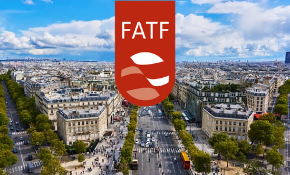Millions of products are bought and sold every day in the world. The vast majority of this shopping takes place online and through banks. However, commercial activities are not homogeneous; It is a combination of people, goo ds , documents, and coins. Trade finance is likewise a versatile operation for both exporters and importers. For this reason, the risks of trading-related financial crimes are relatively high.
Money Laundering Risks in Trade
According to the World Trade Organization data, Global Product Trade in 2015 amounted to 16 trillion USD. However, the Bank for International Settlements reported that Trade financing was around one-third of total global trade or $ 7 trillion in 2015.
We can safely assume that money launderers prefer to examine the movements of funds as little as possible. Therefore, the global trade layer bears the most significant financial crime risk and is also the most complicated to control. Controls in the operational processes of banks are responsible for the prevention and detection of financial crimes. These must-have a preventive effect, not just a detective. The more tightly controlled a bank's operational processes are, the less frequent it will be for criminal organizations.
From the late 1990s to the 2008 crisis, many banks' focus was streamlining and improving their operations to meet their customers' demands for speed and efficiency. Consequently, it has become more attractive to criminal organizations than smaller and more specialized banks with localized transactions and more targeted controls. Another factor is the products offered by banks. When we look at trade products, some are unlikely to attract the attention of money launders. The documentation contained in these products arises from requirements.
Open Account Trading Products
Suppose a bank finances the product. That is, the buyer or seller needs financing. Since money launderers are "long in the money," the lengthy process of applying for credit facilities, with the added scrutiny from various bank departments, is unnecessary and unwanted. The exception is where having credit facilities would be part of the "disguise" put in place to provide a smokescreen for dignity to the criminal organization. Open account products also have varying levels of additional requirements depending on several factors, like the client's creditworthiness or complexity. These kinds of requirements are also included, but not be limited to, the submission of invoices or transport documents.
Documentary Trade Products
It brings multiple hurdles to criminals intending to misuse them. Banks should process these transactions according to a standardized set of rules involving checks on the associated documents' compliance with the terms of the letter of credit. This requires vendors to provide a set of internally consistent documents. Even Documentary Collections, while not necessarily undergoing a check by the bank, will still need document consistency to make a cover for the ever-present Sanctions and increasing (Anti-Money Laundering) AML checks. These control requirements make documentary credit attractive mainly for money flows to and from countries with export or import controls, requiring proof of the goods actually entering or leaving the country.
Understanding Product Risk
The Standard Chartered Bank (SCB) registered Product Risk Assessment involves an assessment of over 400 products. In addition, it analyzes multiple properties of the products. This allows the bank to set a low or medium risk assessment score for AML and Sanctions Risk for open account trade finance.
This is due to the significant level of transparency that the bank has over its client and the end-to-end transaction. The Product Risk Assessment tells us that the highest risk product associated with the trade is cash payments that support open account trading activity. The product with the second-highest risk rating is the Finance Corporation (FI) trade finance. The bank here provides financing to another bank to support its Trade Finance activities. This is similar to correspondent banking, other than the fact that the FI requiring financing will give full details of the underlying Trade transaction, usually in an MT799 message. Therefore, the purpose of the transaction is far more transparent than a correspondent banking payment. Additionally, the underlying documents can be obtained as necessary.
What Are The Financial Crime Risks in Trade Finance?
The FATF, Wolfsberg, and JMLSG have broadly categorized the financial crime risks in trade finance as money laundering / terrorist financing (including fraud) and sanctions/proliferation financing.
Money Laundering & Terrorist Financing: Terrorist financing provides funds for terrorist activity. These activities could be drug trade, the smuggling of weapons and other goods, fraud, kidnapping, and extortion. Terrorists use techniques like those of money launderers to evade authorities' attention and protect the identity of their sponsors and the ultimate beneficiaries of the funds. Money laundering is necessary for criminal organizations to use illegally obtained money effectively. The money laundering process consists of three stages: placement, layering, and integration.
Sanctions/Proliferation Financing:
There is a variety of United Nations, regional, and national sanctions regimes. These regimes are divided into financial sanctions that target named individuals and entities; and trade-based sanctions that put embargoes on the provision of certain goods, services, or expertise to specific countries.





